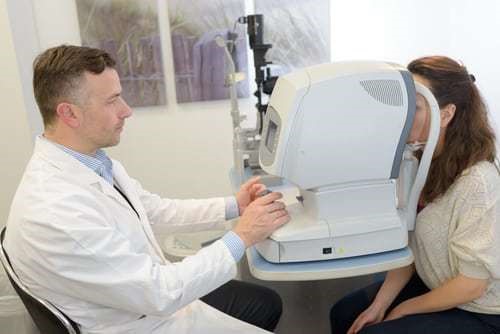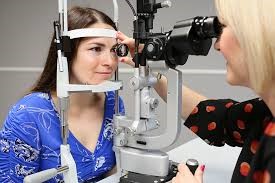About diabetic eye screening
Diabetic eye screening checks for eye problems caused by diabetes. This is important as it can pick up changes at the back of the eye you may not notice. If caught early enough, this can prevent sight loss.
If you have diabetes, your eyes are at risk of damage from a condition called Diabetic Retinopathy. Screening can detect the condition early, before you notice any changes to your vision. Diabetic Retinopathy is treatable, if caught early.
About the Jersey diabetic retinal screening programme
Retinal screening is an important part of managing your diabetes. Every year we invite everyone with diabetes aged 12 and over for a screening test. Some people may need more frequent screening.
Clinics are held at:
Enid Quenault Health and Wellbeing Centre
Les Quennevais Park
La Route des Quennevais
St Brelade
JE3 8JW
Opening times are Monday to Thursday, 8.45am to 3.45pm and Fridays, 8.45am to 12.45pm.
Information about the diabetic retinal screening programme is available in our patient information leaflet:
 Your guide to diabetic retinal screening English
Your guide to diabetic retinal screening English
 Your guide to retinal screening Portuguese
Your guide to retinal screening Portuguese
 Your guide to retinal screening Polish
Your guide to retinal screening Polish
The screening test
First we'll test your vision by asking you to read some letters (or pictures) on a chart at the other end of the room.
We will put drops in your eye to enlarge your pupil. This will allow us to take a good photograph of the back of your eye. The drops may sting and affect your vision for a few hours. You must not drive for 4 hours after your appointment.
The drops take at least 15 minutes to work, so we will ask you to wait. Some people will need more than one lot of drops.
We then take pictures of the back of your eyes to check for any changes. The camera does not come into contact with your eye. The tests do not hurt.
The visit may take up to an hour but usually takes much less. You will receive your results by post, usually within 3 weeks. We'll also send the results to your GP.
How to prepare for the test
To prepare for the test:
-
make sure you have transport home, you must not drive for 4 hours after your test
- bring sunglasses as your eyes can feel sensitive to light after the eye drops
- we'll ask you a series of questions before your screening. Let us know in advance if you need to bring someone with you to help you during your appointment
- let us know of any disabilities which may prevent you from having your eyes screened
Your results
Most people we screen do not show any signs of eye disease. In which case we will invite you for your next appointment in a year’s time.
Sometimes, we will ask you back for another test. Screening can detect early problems which may mean you need:
- a follow-up appointment with an eye specialist at the hospital to see if you need treatment
- more frequent checks in surveillance clinics
Surveillance clinics
If we detect changes at the back of the eye or, if we are unable to get good photographs of the back of the eye, we may call you back for further assessments.
This could include:
-
an OCT scan
-
peripheral photographs
-
slit lamp examination
Optical coherence tomography (OCT) scan
This is a quick scan that allows us to look at the back of the eye in more detail and in 3D. This scan takes up to 10 minutes and you do not need drops in your eyes.
Our clinical lead will review your results and we will send your results and treatment plan to you in the post.

Peripheral photographs
If we identify any problems on the very outer edge of your initial screening photographs, we may ask you to come back for peripheral photographs.
This assessment is the same as your initial one, but we will take a larger number of photographs. Our clinical lead will review the results and we will send your results and treatment plan to you in the post.
Slit lamp examination
We use this test when we can’t see the back of your eye on the photograph. This is often due to cataracts. This test is undertaken by our optician and takes up to 20 minutes. You will need to have drops in your eyes for this assessment so the whole appointment may take up to an hour. You will get your results on the day.

Diabetic retinopathy and it's symptoms
Diabetic retinopathy occurs when diabetes affects small blood vessels. This can damage the part of the eye called the retina. If left untreated, diabetic retinopathy is one of the most common causes of sight loss.
Symptoms include:
- retinal swelling (such as macular oedema)
- eye floaters
- blurriness
- loss of central vision
- black spots in the area of vision
- difficulty perceiving colours
- blindness
How to reduce your risk of diabetic retinopathy
You should:
- control your blood glucose levels
- see your doctor regularly
- take your medication
- attend your diabetic eye screening appointments
- get advice from your GP or Optician if you have concerns about your sight
Retinal screening is not included as part of your normal eye examination with an optician in Jersey.
Screening does not look for other eye conditions. You should continue to visit your optician for an eye examination as well.